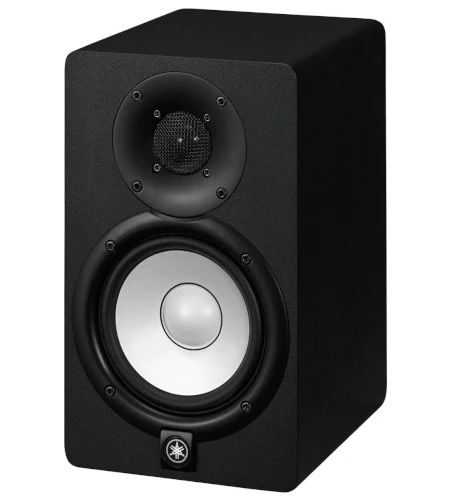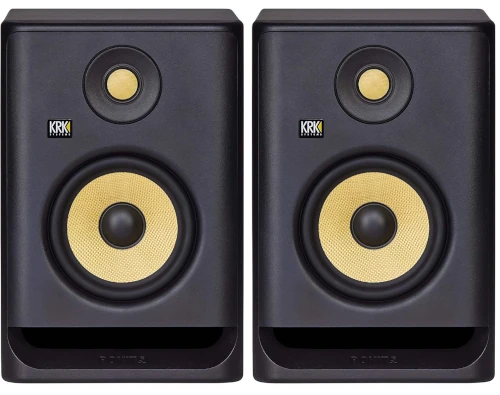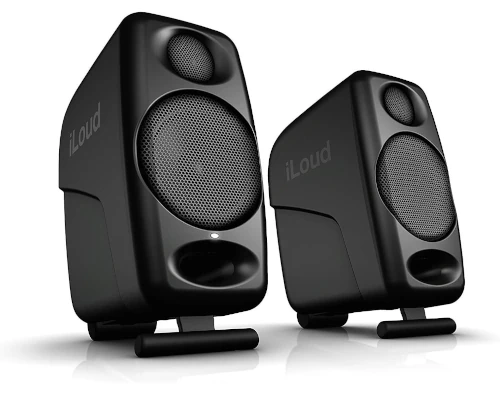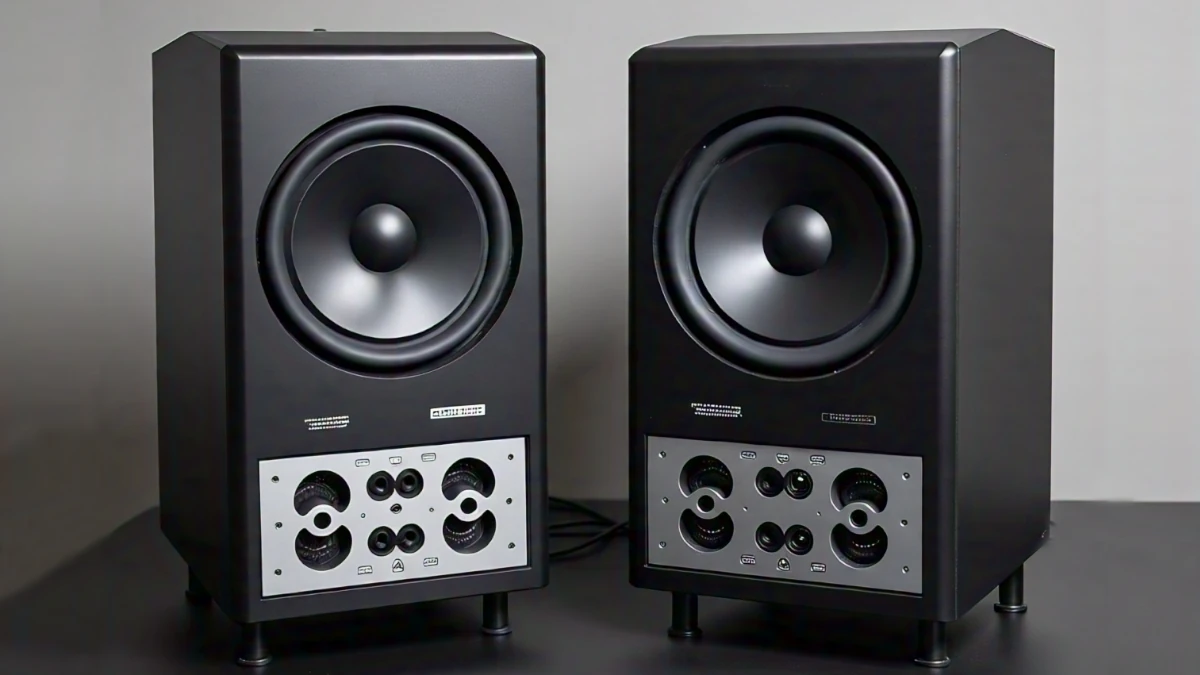Are you ready to elevate your music production game? If you’re working in a compact environment, every detail counts—and having the right gear can make all the difference. Imagine this: You’ve spent hours crafting the perfect track, and just when you think it’s ready to share with the world, you play it back on subpar speakers, and the magic disappears. Frustrating, right? The truth is, the monitors you choose can either enhance or hinder your creative flow, especially in small recording spaces where every inch matters.
But don’t worry! We’re here to help you find the best studio monitors tailored for your cozy little nook. With so many options available, you might feel overwhelmed—fear not, dear reader! In this post, we’ll break it down for you, highlighting the key features, offering real-life case studies, and providing practical tips to ensure you make an informed choice. Whether you’re a budding producer or an assisted veteran in the field, we’ve got the insights you need to transform your space into a sonic sanctuary. Let’s dive into the world of studio monitors, and let your music shine like never before!
1. Acoustic Considerations for Small Spaces
When it comes to setting up your recording space, especially in a small area, understanding acoustic considerations is crucial. The right environment can significantly enhance the performance of your best studio monitors for small recording spaces. Let’s dive into what you need to know!
Room Dimensions and Shape
First off, consider the dimensions and shape of your room. Rectangular rooms can create standing waves, which are pockets of sound that can muddy your audio. If possible, try to choose a space that is more square-like or irregularly shaped. This can help diffuse sound waves and reduce these problematic areas.
Soundproofing and Treatment
Next, let’s talk about soundproofing. While you might not have the budget for professional acoustic treatment, there are simple and cost-effective ways to improve your room’s acoustics. For instance, adding heavy curtains or acoustic panels can absorb sound and reduce reflections. You can even use bookshelves filled with books or strategically placed furniture to break up sound waves.
Speaker Placement
Now, let’s get to the core of the matter: speaker placement. In small spaces, where you place your studio monitors can make all the difference. Ideally, your monitors should form an equilateral triangle with your listening position. This means placing them at least a few feet away from the walls to minimize reflections. You might want to experiment with different angles to find the sweet spot where your monitors sound best.
Using Low Frequencies Wisely
Finally, be cautious about low frequencies. Small rooms tend to exaggerate bass notes, which can lead to an inaccurate mix. If you find that your monitors are producing too much bass, consider using a high-pass filter or adding bass traps in the corners of your room to tame those booming lows.
By addressing these acoustic considerations, you can create a more balanced listening environment that allows your monitors to shine. Remember, a well-treated small space can often outperform a poorly treated larger room!
2. Size vs. Power: Finding the Right Balance
When it comes to choosing the best studio monitors for small recording spaces, understanding the balance between size and power is crucial. In smaller environments, your monitors need to pack enough punch to deliver accurate sound without overwhelming the space.
The Importance of Size

First things first, size matters! Smaller studio monitors, generally around 5 to 6 inches, are often ideal for compact areas. They take up less room and can be positioned easily without creating acoustic issues. For instance, a popular choice among home studio owners is the Yamaha HS5. With its 5-inch woofer, it produces clear highs and balanced lows, making it perfect for mixing without overwhelming your ears or space.
Power Considerations

Now, let’s talk about power. Larger monitors often boast more power, which can be beneficial in larger rooms. However, in a small studio, too much power can lead to distortion and an inaccurate listening environment. Consider the KRK Rokit 5 G4. This model strikes a fantastic balance with a 5-inch woofer and 55 watts of power. It’s powerful enough to deliver a solid bass response while still being manageable in a tighter space.
Finding Your Sweet Spot
So, how do you find the right balance between size and power? Start by assessing your space. If your studio is under 100 square feet, lean toward monitors with smaller woofers (5-6 inches) that offer enough wattage to fill the room without causing ear fatigue. Experiment with positioning—placing your monitors at ear level and at least a foot away from walls can significantly improve sound clarity.
In conclusion, selecting the right size and power for your studio monitors can profoundly impact your mixing and producing experience. By opting for smaller, yet powerful monitors, you’ll not only save space but also enhance your sound quality in a compact recording environment.
3. Portability and Versatility of Studio Monitors
When it comes to finding the best studio monitors for small recording spaces, portability and versatility are key factors to consider. These characteristics can significantly enhance your music production experience, especially if you’re working in tight quarters or frequently moving your setup.
Why Portability Matters

Imagine this: you’ve set up your small recording space in your bedroom, but you also want to take your work to a friend’s house or a different location. Having studio monitors that are lightweight and easy to transport can make a world of difference. Models like the IK Multimedia iLoud Micro Monitors are excellent examples. Weighing in at just under 3.5 pounds each, these compact monitors deliver impressive sound quality without taking up too much space or adding extra weight to your gear.
Versatility for Different Environments
Versatility is another crucial aspect to consider. Look for studio monitors that can adapt to various room sizes and types. The KRK Rokit 5 G4 is a prime example, featuring adjustable EQ settings that allow you to tailor the sound to your specific environment. Whether you’re mixing in a small bedroom or a larger studio, this adaptability ensures you can achieve balanced sound regardless of your surroundings.
Practical Tips for Choosing Portable and Versatile Monitors
- Weight and Size: Always check the weight and dimensions. Opt for monitors that are compact and lightweight, making them easy to transport.
- Adjustable Features: Look for monitors with built-in EQ controls or settings that allow you to tweak the sound based on your space.
- Durability: If you’re frequently moving your gear, choose monitors that are built to withstand travel. A solid enclosure can protect your investment.
In summary, selecting studio monitors that are both portable and versatile can greatly enhance your productivity in small recording spaces. By considering models like the iLoud Micro Monitors and KRK Rokit 5 G4, you set yourself up for success, no matter where your creative journey takes you!
4. Budget
When it comes to choosing the best studio monitors for small recording spaces, budget plays a crucial role in your decision-making process. With a plethora of options available, understanding how to allocate your resources can make all the difference in achieving the best sound quality without breaking the bank.
Setting a Realistic Budget
First things first, establish a clear budget. Consider your overall setup. Are you just starting out or do you already have some equipment? If you’re new to home recording, you might want to start with a budget of $300 to $500 for a decent pair of monitors. Brands like KRK and Yamaha offer great entry-level options like the KRK Rokit 5 G4 or Yamaha HS5 within this price range. These monitors provide excellent sound clarity and are a favorite among beginners.
Understanding the Value of Investment
Now, let’s think about the long-term benefits. Investing a bit more, say $600 to $1,200, can get you high-quality monitors such as the Genelec 8010A or Focal Alpha 65 Evo. These models not only deliver superior sound but also have features that enhance their performance in small spaces, like room tuning controls. This means you’re not just buying speakers; you’re investing in a tool that will help your music sound its absolute best.
Finding Deals and Discounts
Don’t forget to shop around! Platforms like Sweetwater or Guitar Center often have sales or refurbished items that can help you save money. You might find a pair of JBL 305P MkII monitors at a discount, which are fantastic for small spaces due to their accurate sound reproduction.
In conclusion, your budget should reflect both your current needs and future aspirations. By setting a realistic budget, understanding the value of your investment, and searching for deals, you can find the best studio monitors that perfectly fit your small recording space without compromising on quality.
5. User Reviews and Recommendations
When hunting for the best studio monitors for small recording spaces, you can’t overlook the invaluable insights provided by user reviews and recommendations. These real-world experiences can guide you in making informed decisions, ensuring you select monitors that truly meet your needs.
Understanding User Insights
User reviews often highlight the pros and cons of a product that you might not find in professional reviews. For instance, consider the KRK Rokit 5 G4. Many users rave about its powerful bass response, which is fantastic for electronic music producers. However, some users have pointed out that the bass can be overwhelming in smaller spaces. This kind of feedback is crucial because it helps you understand how a monitor will perform in your specific environment.
Where to Find Reviews
Websites like Sweetwater, Guitar Center, and forums such as Gearslutz are great places to start. There, you can find user ratings and detailed comments that can shed light on the user experience. Look for reviews that mention the acoustics of small spaces, as this will be particularly relevant to your search.
Practical Tips for Evaluating Reviews
When reading through reviews, pay attention to common themes. If multiple users mention that a certain model sounds muddy in small rooms, it’s worth considering alternatives. Additionally, check for reviews from users who share a similar music style or genre as you. For example, if you’re into hip-hop, feedback from fellow hip-hop producers can be incredibly useful.
Recommendations from Trusted Sources
Finally, don’t forget to seek recommendations from industry professionals or trusted friends in the music production community. They can often point you toward monitors they’ve personally vetted and can discuss their experiences, which can be more reliable than anonymous online reviews.
In summary, user reviews and recommendations are essential tools in your quest for the best studio monitors tailored for small recording spaces. By leveraging the experiences of others, you can make a more confident and informed choice that will enhance your music production journey.
Conclusion
In summary, selecting the best studio monitors for small recording spaces is crucial for achieving high-quality sound and an efficient workflow. We explored several key considerations, including room acoustics, monitor size and type, frequency response, and budget. Each of these factors plays a significant role in delivering accurate sound reproduction, which is essential for making critical mixing decisions.
Some standout options, such as the Yamaha HS5 and KRK Rokit 5 G4, were highlighted for their superior performance in compact environments. We also examined the importance of investing in isolation pads and proper placement to maximize your monitors’ potential, regardless of space limitations.
Ultimately, the right studio monitors not only enhance your audio experience but also elevate your creative process. Remember, your small recording space can be transformed into a professional-grade studio with the right gear and setup!
So, why wait? Dive into the world of sound and start building your dream recording space today! Explore your options, test different models, and consider your unique needs. Trip up to your local music store or browse online to find the perfect monitors that will help you create your best work.
Your journey in music production deserves the best tools possible. Upgrade your sound today and unleash your creativity like never before!

